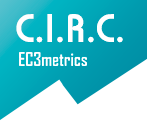Clases diversas en las escuelas de Estados Unidos. La importancia de una educación inclusiva
Abstract
Durante los últimos años en Estados Unidos, las aulas se han vuelto cada vez más diversas con estudiantes de diferentes estilos y habilidades de aprendizaje, con estudiantes de necesidades especiales, y con la inclusión de estudiantes cuya lengua materna no es el inglés. Ante esta realidad, los docentes deben adaptar las prácticas educativas, y trabajar colaborativamente con el fin de desarrollar –o mejorar- nuevas rutinas a través de la diferenciación, un proceso metodológico de enseñanza para estudiantes con diferentes habilidades en la misma clase. El objetivo de este estudio es indicar aquellas prácticas educativas que un docente debería tener en cuenta durante su instrucción con el fin de atender a dicha diversidad. Con una metodología cuantitativa de investigación se han encuestado a 60 docentes de escuelas primarias, medias, y secundarias del estado de Virginia, quienes trabajan con grupos heterogéneos de estudiantes en cuanto a sus habilidades académicas. Los hallazgos han demostrado que factores como el diseño de las lecciones, la planificación colaborativa, la atención a la diversidad, las estrategias didácticas, la instrucción, y la evaluación, sostienen la base de la diferenciación, y sirven para mejorar las oportunidades de los estudiantes en su camino al éxito académico.
Keywords
References
Ainsworth, L. y Viegut, D. (2007) Common Formative Assessments. California: Corwin Press.
Armstrong, T. (2009) Multiple Intelligences in the Classroom 3rd Edition. Alexandria, VA: ASCD (2009)
Chen F. J., Warden A. C., y Chang H. T. (2005). Motivators that do not motivate: The case of Chinese EFL learners and the influence of culture on motivation. TESOL Quarterly, 39(4), 609-33
Dufour, R.,Dufour, R., Eaker, R., y Karhanek, G. (2004) Whatever it Takes: How Professional Learning Communities Respond When Kids Don’t Learn. Bloomington, IN: National Education Service
Erickson L. (2002). Concept-Based Currículo and Instruction: Teaching Beyond the Facts. Thousand Oaks, California: Corwin Press.
Ferguson, Bruce, Tilleczek, K., Boydell, K., Anneke Rummens, J. (2005). Early School Leavers: Understanding the Lived Reality of Student Disengagement from Secondary School. SickKids Toronto
Gibson V., y Hasbrouck J. (2009). Differentiated Instruction. New York: McGraw-Hill.
Hall T., Meyer A., y Rose D. (2012). Universal Design for Learning in the Classroom: Practical Applications (What Works for Special-Needs Learners). New York: The Guilford Press.
Kosanovich, M.L., Ladinsky, K., Nelson, L., y Torgesen, J.K. (2006). Differentiating reading instruction: Small group lesson structures for all students. Tallahassee, FL: Florida Center for Reading Research
Mathes, P. G., Denton, C. A., Fletcher, J. M., Anthony, J. L., Francis, D. J.,y Schatschneider, C. (2005). The effects of theoretically different instruction and student characteristics on the skills of struggling readers. Reading Research Quarterly, 40(2), 148-182.
Marzano, R., Marzano J. S., & Pickering D. J. (2003) Classroom Management that Works:Research-Based Strategies for Every Teacher, Alexandria, Virginia: ASCD
Rothenberg C., & Fisher, D. (2007) Teaching English Language Learners. A Differentiated Approach. Upper Saddle River, New Jersey: Pearson.
Shanahan T. (2008). Teaching Disciplinary Literacy to Adolescents: Rethinking Content-Area Literacy. Harvard Educational Review, 78, 48.
Stanovich, K. E. (2008). Higher-order preferences and the Master Rationality Motive. Thinking & Reasoning, 14, 111-127
Sternberg R., & Grigorenko E. (2000). Our Labeled Children: What Every Parent And Teacher Needs To Know About Learning Disabilities. New York, NY: Perseus Publishing.
Tomlinson, C. A. (2004). Fulfilling the Promise of the Differentiated Classroom: Strategies and Tools for Responsive Teaching. Alexandria, VA: Association for Supervision and Currículo Development.
Tomlinson, C.A. (2001). How to Differentiate Instruction in Mixed-Ability Classrooms, 2nd ed. Alexandria, Virginia: Association for Supervision and Currículo Development.
Tomlinson C. A., & McTighe J. (2006) Integrating Differentiated Instruction & Understanding by Design: Connecting Content and Kids. Alexandria, Virginia: ASCD
Tomlinson, C. A., & Eidson C., (1999) The Differentiated Classroom: Responding to the Needs of All Learners. Alexandria, Virginia: Association for Supervision and Currículo Development.
Vygotsky, L. (1978). Mind in Society. Cambridge, MA: Harvard University Press.
Wiggins G., & McTighe J. (2005) Understanding By Design. Second Edition. Alexandria, Virginia: Association for Supervision and Currículo Development.
Refbacks
- There are currently no refbacks.
Indexación:
 |  |  |
 |  |  |
-
| ISSN: 1889-4208 / e-ISSN: 1989-4643 | |
 Este trabajo se autoriza con una licencia Creative Commons Asignación 4.0 Internacional.
Este trabajo se autoriza con una licencia Creative Commons Asignación 4.0 Internacional.
